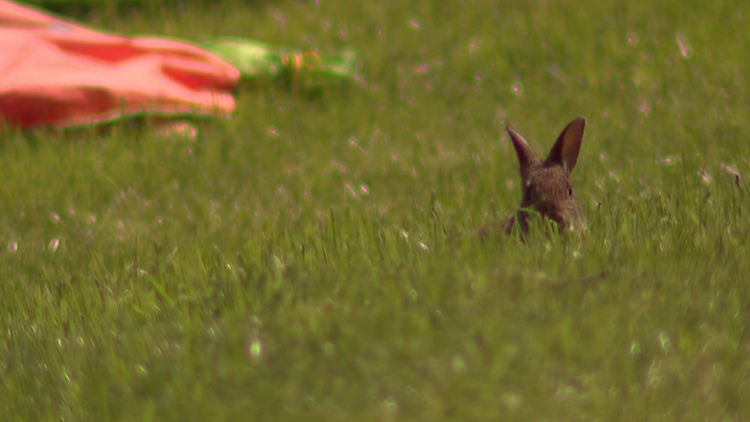TEXAS, USA — Texas Parks and Wildlife Department (TPWD) has confirmed a new case of Rabbit Hemorrhagic Disease virus 2 (RHDV2) in a wild black-tailed jackrabbit in Cottle County.
According to TPWD, this marks the first confirmed case of RHDV2 in a wild rabbit in Texas in 2021 and follows the discovery of the disease in domestic rabbits in Tom Green County, recently announced by the Texas Animal Health Commission (TAHC).
This is also the first discovery of the disease in a domestic rabbit of 2021.
Rabbit Hemorrhagic Disease (RHD) is a highly contagious viral disease that can affect both domestic and wild rabbit species including hares, jackrabbits and cottontails. This disease is nearly always fatal and primarily affects adult rabbits. The viral agent, Rabbit Hemorrhagic Disease Virus (RHDV), is a calicivirus with two strains, RHDV1 and RHDV2, both being reported in North America in recent years. RHDV appears only to affect rabbit species (lagomorphs). It is not known to affect humans, livestock or pets other than rabbits. However, pets should not be allowed to consume dead animal carcasses.
TPWD has confirmed RHDV2 in the wild rabbit population in the following counties:
- Brewster County
- Cottle County
- Culberson County
- El Paso County
- Gaines County
- Hale County
- Hockley County
- Hudspeth County
- Jeff Davis County
- Lubbock County
- Pecos County
- Presidio County
- Randall County
- Terrell County
- Ward County
If you notice sick or dead wild rabbits, contact your local TPWD wildlife biologist.
Often the only clinical sign is sudden death. In less acute cases, clinical signs in rabbits have included the following: dullness/apathy, not eating, bleeding from the nose and eyes or watery, congested eyes. Some may also exhibit neurological signs such as incoordination, excitement or seizure-like episodes.
This is a highly contagious disease that spreads between rabbits through contact with infected rabbits or carcasses, their meat or their fur, contaminated food or water, or materials encountering them. RHDV2 can persist in the environment for a very long time. These factors make disease control efforts extremely challenging once it is in the wild rabbit populations.
Domestic rabbit owners who have questions about RHDV2 or observe sudden death in their rabbits should contact their private veterinarian. Private veterinarians are requested to contact the USDA-APHIS or the TAHC to report any suspected cases at 1-800-550-8242. Rabbit owners or breeders should practice biosecurity on their farms and in their homes. Report all unusual mass morbidity (sickness) or mortality (deaths) events to the TAHC.
Find more information about RHD on the U.S. Department of Agriculture (USDA) Animal and Plant Health Inspection Service fact sheet.



